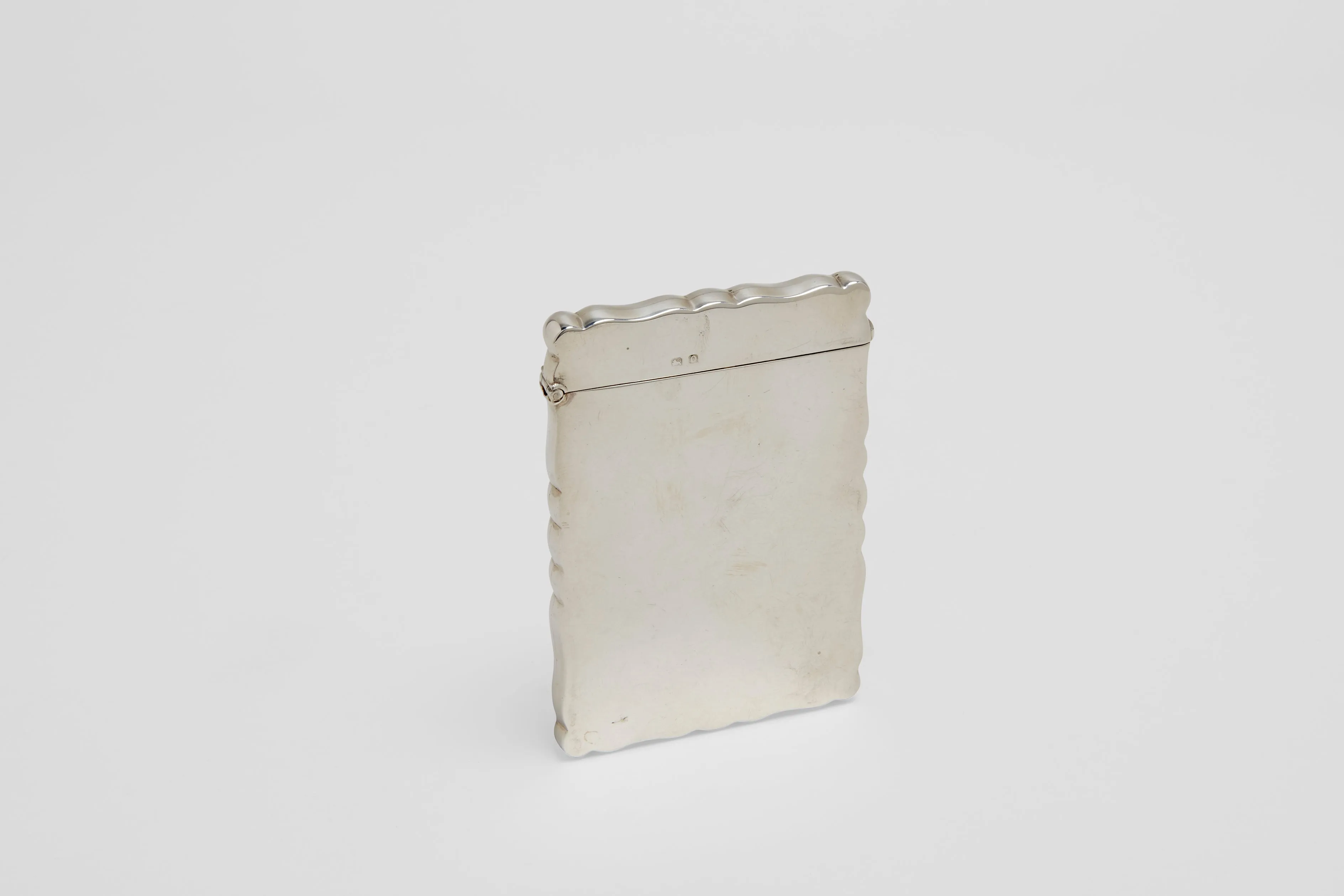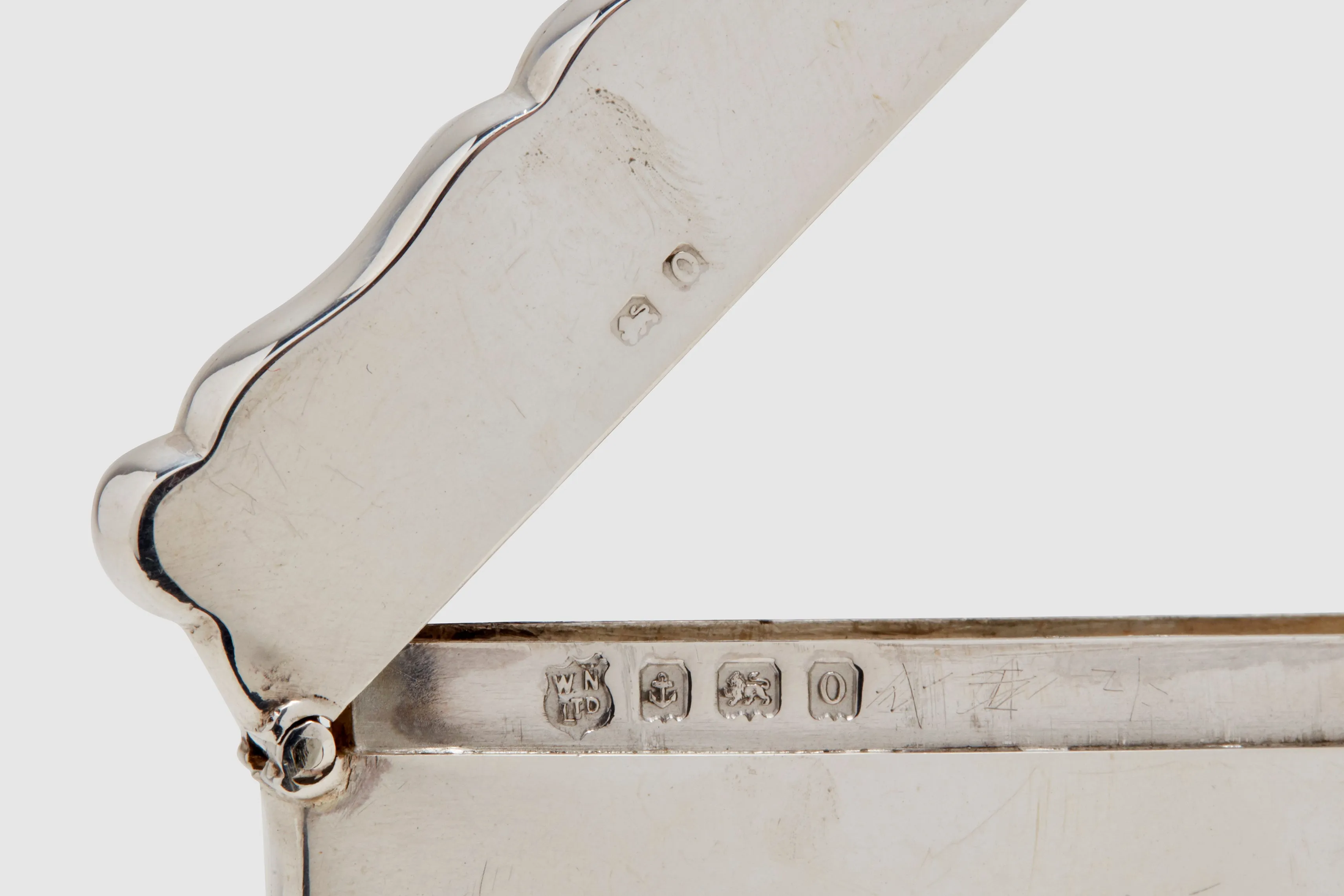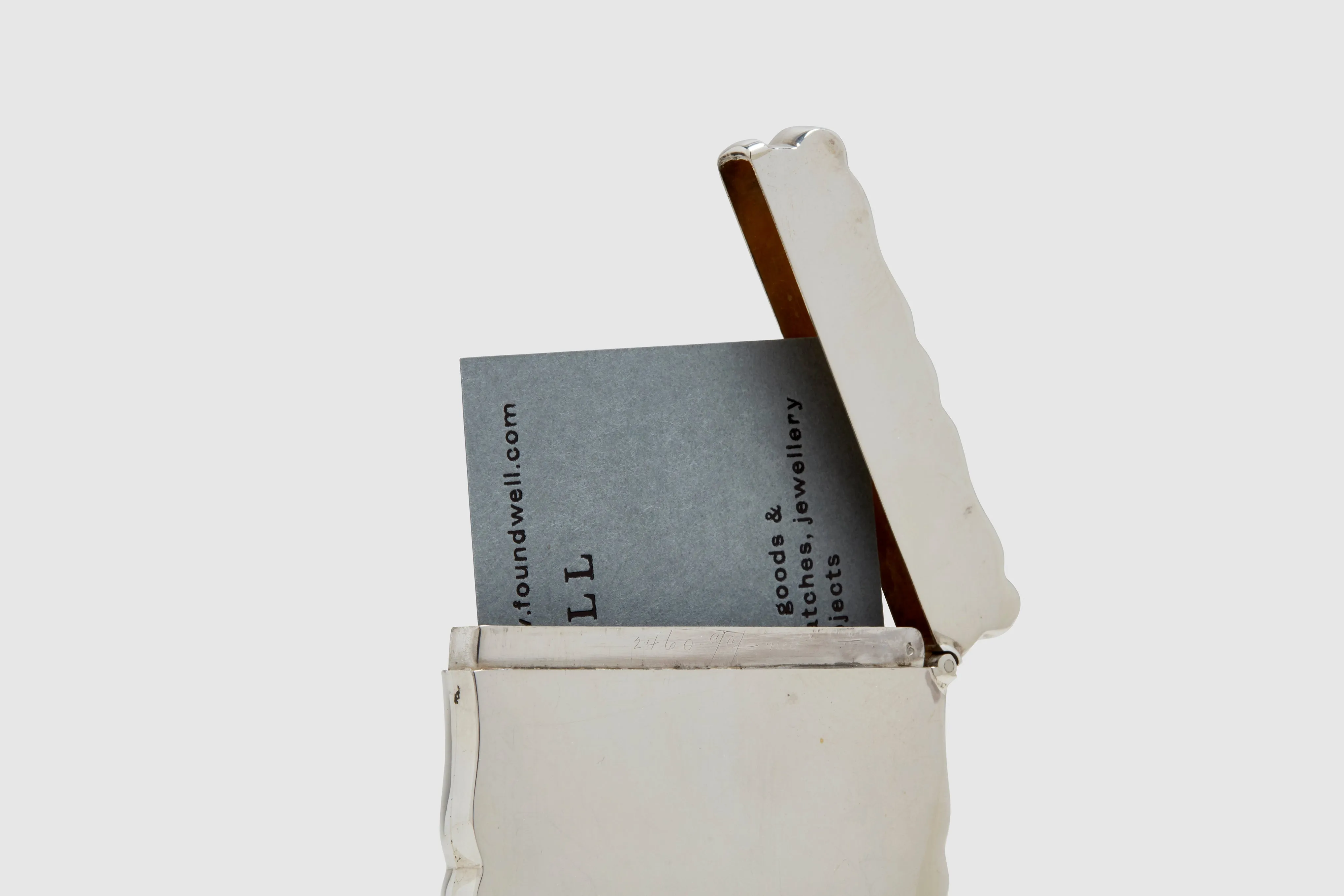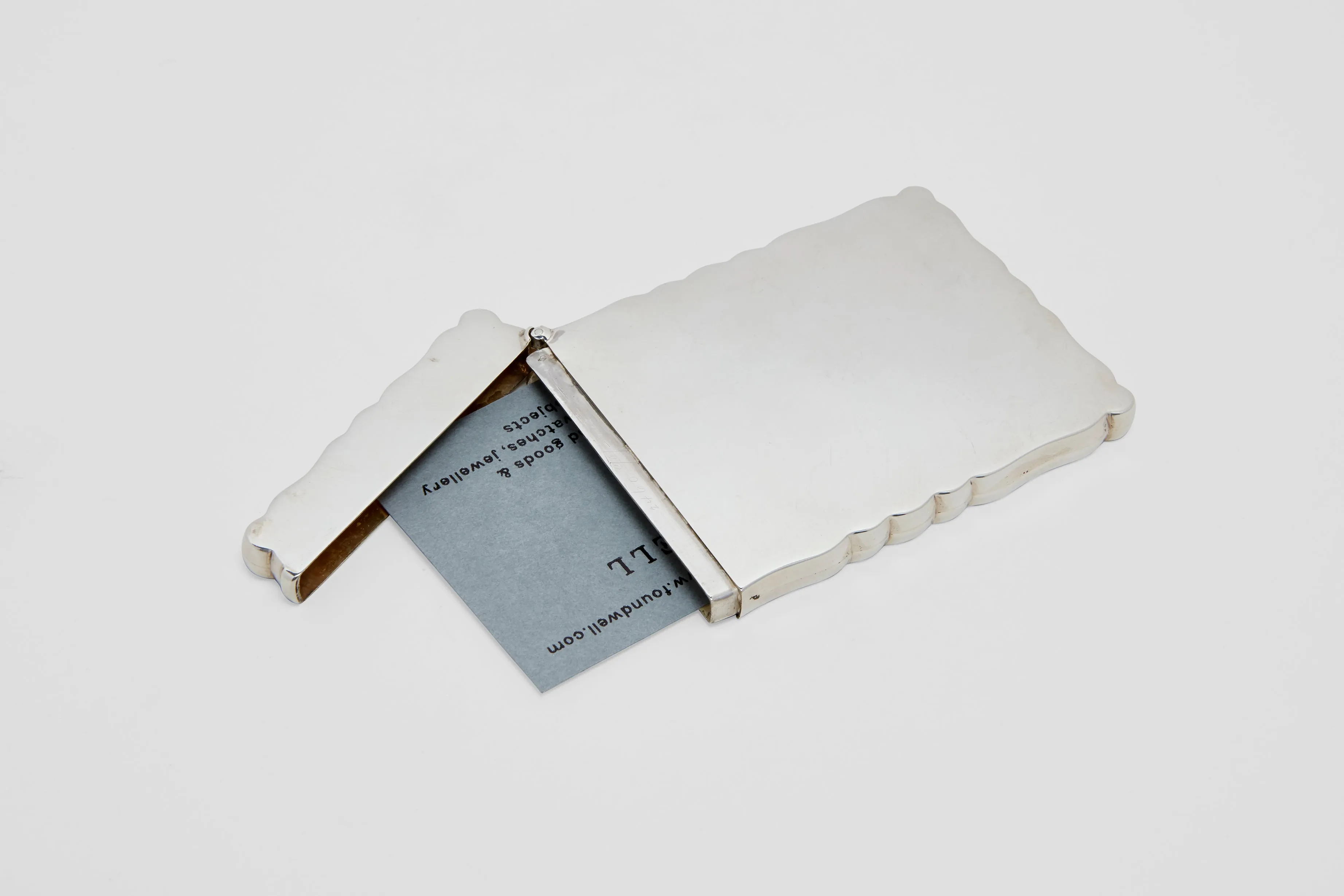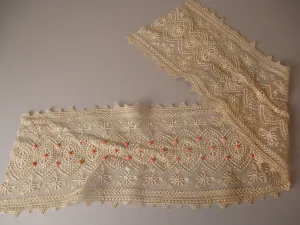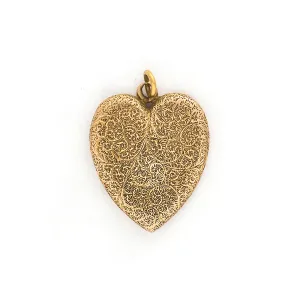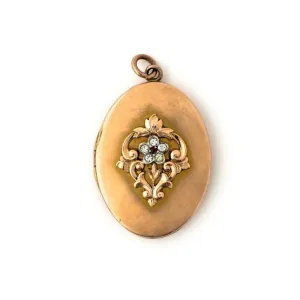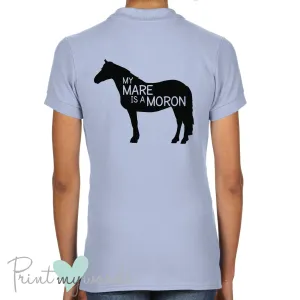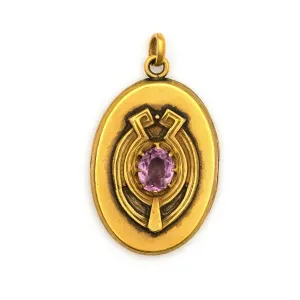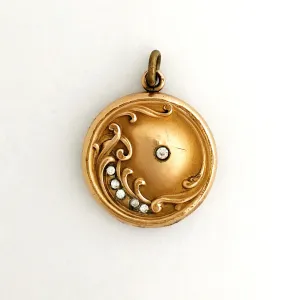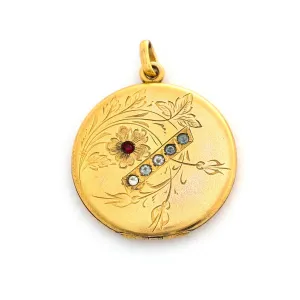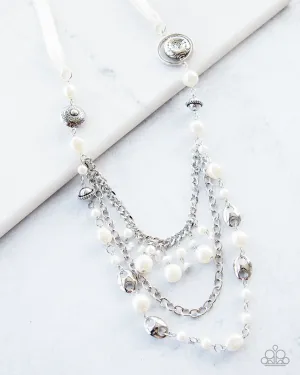A sterling silver business card case with a scalloped edge. This is an exquisite example of a large sized business or "calling card" case from England. This size, that comfortably fits both credit card and business cards, is much harder to find as the average width of a calling card from this time was much more narrow.
The edge of the body of the entire case, lid and base, has a wonderfully shaped edge detailing. This style of edging is know as 'scalloping', and was very popular across furniture, architecture and found its way into silver items too. It reflects a refined amount of adornment to what is, overall, a very simple and classic piece. It is just the right amount of detail without being too over the top.
The lid is a classic "piano" style pinned through the side. The hinge is tight, and closes seamlessly matching the edging from the top and the bottom perfectly.
Cases such as these make for beautiful wallets today. They allow a number of credit cards, ID and any other card needed on a regular basis to be carried in a neat, clean and tidy way. They also prevent the risk of contactless cards being cloned while in the pocket.
The card case was made in Birmingham, England, in 1913, shortly before the outbreak of the First World War. It has the makers marks of W. N. Ltd. for William Neale Limited. William Neale's mark was entered at the Birmingham assay office in April 1862 and at the Chester assay office in September 1882. Later the firm was known as William Neale & Sons to acknowledge the partnership of William Neale senior, William Neale junior & Arthur Neale. New larger premises were required and the firm relocated to a purpose built factory at 29 Warstone Lane, Birmingham (1896). In 1905 the firm became a limited company; William Neale & Sons Ltd, as can be seen with this piece. They were a fairly large scale silversmith in Birmingham producing a very wide variety of objets. Their quality of their work is certainly reflected in this piece. The condition of the piece is exceptional, and shows no signs of damage or denting. A beautiful example of something highly practical now well over one hundred years old.

